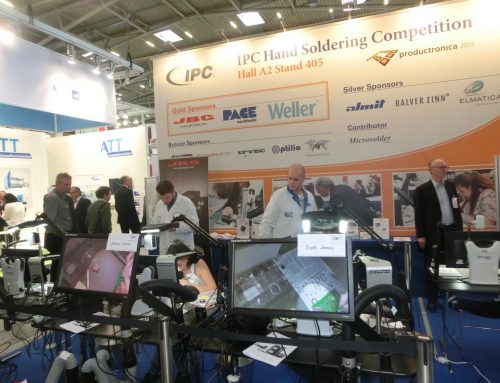162 passengers killed in an airplane crash in Indonesia, 150 fatalities in the Alps, 298 people killed when MH17 was shot from the sky. Every time a big airplane crashes the world panics. But after some days or weeks, nobody talks about it anymore and eventually the disaster is forgotten for most of us. Very rarely the public is informed on the causes of the crashes, but that doesn’t mean that there is no information available.
A recent publication of the report on the AirAsia crash of 28 December 2014 stirred things up and provided information on the investigations. And this Airbus A320 crash was not something of its own, it showed similarities with an Air France crash in 2009. Initially from the flight-data recorder, one might conclude the AirAsia plane crashed because of the errors by the pilots and maybe their lack of experience with manual flight might have made things worse, but this didn’t seem to be the root cause.
The investigations showed that the actual root cause had been cracked solder joints and subsequent intermittent failures on a circuit board within the rudder control system. What is even more startling is that apparently in the previous year the same fault occurred on this circuit board 23 times, 9 times in December 2015 alone. And every time the circuit breakers were reset by maintenance staff.
It even occurred 4 times at its fatal flight, or rather within the first 30 minutes of it! Finally, the pilot decided to reset the circuit breakers and the system didn’t recover anymore, the autopilot quit its job and the pilots were on their own, handling the machine manually, which apparently they were not capable of.
Two types of failures!
In general failures in electronic circuit boards are either consistent or intermittent. The consistent ones are the easiest to detect since in this case, the entire system fails. Intermittent failures, however, are a growing problem and more difficult to detect. The product fails, is sent to the repair department for analysis and repair, but here often appears to be NFF or No Fault Found, meaning the unit is not showing the failure mode as it did in the field.
If replaced in the airplane, where it is submitted to high G loading, thermal stresses, vibration and other stress mechanisms, the unit starts failing again, like it did in the AirAsia example numerous times before and during its fatal flight.
How do intermittent failures occur in electronics?
Every solder connection “ages” with time, depending on the thermal cycling circumstances the electronic product faces, this aging will occur more or less rapid for certain applications. Constant high operating temperatures, rapid thermal cycles, especially involving extensive temperature excursions or vibration are some common factors that contribute to a faster degradation of soldered connections.
Sometimes electronic products are already “walking wounded” when they exit the production facilities because of bad production methods, excessive, unnecessary or falsely executed rework or repair operations, handling issues etc.. The operators might have shot them “in the foot” while handling them.
In many cases, operators want to produce “nice” looking solder joints and they will go to almost every extent to get them nice. But is a connection that looks nice a good one?
Shouldn’t we rather rely on the acceptance criteria as found in documents like the IPC-A-610 and IPC/J-STD-001 on solder connection appearance (mind you, the word “nice” you will not find in either publication)? Remember that these standards are developed by a group of people from leading companies in the electronics industry.
What “kills” solder joints?
The elevated temperatures during the hand soldering processes can lead to oxidation, corrosion, grain growth of soldering alloys, evaporation of plasticizers in component bodies, mechanical internal damage of components, softening of component materials, board and conductor damage etc.
Every rework or repair operation actually reduces the reliability of a solder joint. Two mechanisms have to be considered here, thermal shock and growth of intermetallic compounds. Furthermore, rework that is done incorrectly can lead to cold solder joints.
Thermal shock or thermal stress
Thermal shock is defined as a rapid temperature change, it can occur during the soldering processes. It can lead to cracks in solder connections or components; ceramic components are particularly susceptible to this. Sometimes preheating or specific soldering methods are recommended to prevent thermal shock when hand soldering these kinds of components.
Growth of intermetallic compounds
During the soldering process, a metallurgical reaction takes place between the solder and the base metal. This reaction creates new metal alloys (e.g. Cu3Sn and Cu6Sn5) the so-called intermetallic layer or intermetallic compound (IMC). This intermetallic layer (IMC) holds the solder connection together and is very important for the reliability of the solder connection.
However, the intermetallic layer is brittle and should be as thin as possible. The thicker the layer becomes, the higher brittleness will affect the mechanical strength (results in cracking of the solder joint), the electrical conductivity and if the IMC is exposed to air the solder joint will oxidize very quickly.
Growth of the intermetallic layer is caused by heat, long dwell time, solder alloy, base metal, cleanliness of the surfaces to be joined.
Every time a solder connection is reheated the intermetallic layer will grow, thus reducing the reliability of the solder connection!
Cold solder joints
Cold solder joints are unreliable; the joint will be weak and cold joints often develop cracks over time. Cold solder joints occur when the thermal energy produced by the soldering process is insufficient for the given application, often this means the soldering temperature is too low. Remember that the temperature displayed on the soldering station is not always the actual temperature measured at the tip!
Furthermore, insufficient or wrong flux type, oxidized soldering iron tips, wrong tip size or thermal capacity and contamination can lead to cold solder joints.
Conclusion
All of the above mechanisms are influenced by the (hand) soldering processes in rework and repair operations. Every thermal excursion leads to thermal stress, growth of intermetallic layers and thus a reduction of the reliability.
Before starting rework and repair operations consider if they are necessary if the reason would be mere to obtain a connection that looks nicer, let it be.
If rework or repair operations are necessary it is of the utmost importance that operators, inspectors and actually everyone involved in the process understands the above mechanisms and the risks involved in their operations. What better way to gain the necessary knowledge, understanding and workmanship level than attending our certification training courses and workshops on the various aspects of design, inspection, rework and repair.
Frank Huijsmans






